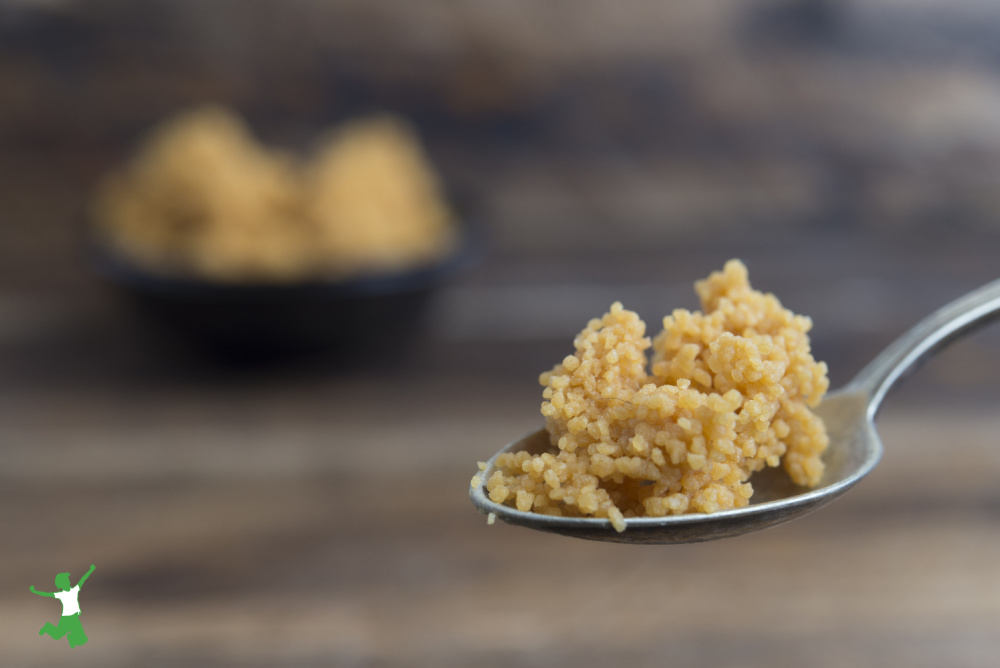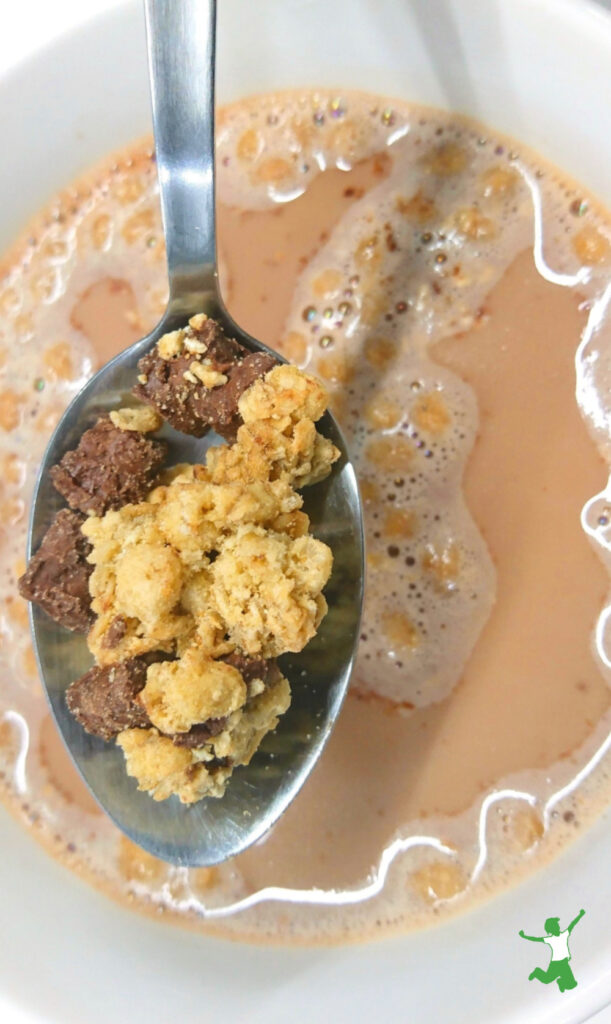The balanced analysis of the additive soy lecithin, a ubiquitous food ingredient even in organic foods. Discussion on when to avoid it, including supplements, and when it is harmless with little need for concern.

If you are an avid label reader like I am, you have surely noticed that the additive soy lecithin is listed in a wide variety of packaged and processed foods. Even products labeled 100% organic frequently contain it.
Soy, commonly called “soya” outside the United States, is one of the most common allergens permeating the world’s food supply.
It is included in the “Big 8” group of major allergenic foods.
The other seven allergens are milk, eggs, fish, shellfish, tree nuts, peanuts, and, of course, wheat.
Allergic reactions to soy range from mild to life-threatening anaphylaxis. The good news is that research has shown that most children allergic to soy will outgrow it by age 10.
The lack of a soy allergy, however, does not mean that soy should be consumed regularly.
Numerous scientific studies warn about the negative hormonal and digestive effects of unfermented soy in the diet.
Note that fermented soy like miso, tempeh, and natto are generally safe if nonGMO and consumed only by those without existing thyroid issues.
What is Soy Lecithin?
But what about soy lecithin?
Lecithin, after all, is a natural and necessary emulsifying substance found in the cells of all living organisms.
It is found in many whole foods such as cabbage, cauliflower, chickpeas, nuts, seeds, and eggs among many others.
When this seemingly innocuous additive is listed on a food label, it is usually one of the very last ingredients. This means that minute amounts are present.
Does a tiny amount of lecithin extracted from soy and added to food as an emulsifier pose a risk to health? It certainly doesn’t compare to exposure from say, a soy milk latte from Starbucks, right?
Could this issue be overblown in the majority of cases?
Soybean Lecithin Manufacturing
To get to the crux of this issue, it is first necessary to understand how soy lecithin is manufactured.
Dr. Kaayla Daniel provides an in-depth analysis that the industry would prefer you not know about in her book The Whole Soy Story.
Dr. Daniel’s research uncovered that soybean lecithin, aka soy lecithin, is actually a waste product from the manufacturing process that produces soy oil. It is extracted from the sludge that is left after the soy oil undergoes a degumming process. (1)
Uses
Soy lecithin has been around since early in the last century when scientists uncovered the many ways to use it after a patented process producing it was developed by companies in Germany.
Today, manufacturers most commonly use it as a food emulsifier to keep water and fats from separating.
Soy lecithin also extends product shelf life thereby increasing the profitability of the wide variety of processed foods that contain it, even infant formula!
Toxic Residues
While soy lecithin derived from soy oil sludge is not necessarily a problem, it is what this waste product contains that gives the most reason for concern.
The extraction of the soy oil from the bean requires the use of toxic solvents like hexane similar to the chemical sprays used to extract every drop of orange juice from conventional oranges.
In addition, commercial soy these days is almost always genetically modified meaning pesticide residue galore.
Adding insult to injury, the soy lecithin which no doubt contains toxic solvent and pesticide residues is bleached to transform the color from a dirty brownish hue to a light yellow.
Allergic Reactions
While the manufacturing process of soy lecithin theoretically removes all soy proteins leaving a product that is hypoallergenic, the reality is something else.
Even tiny amounts of soy protein residue in soy lecithin are a danger to those with soy allergies.
Dr. Daniel’s research identified that one of the three components of soy protein, the Kunitz trypsin inhibitor, capable of triggering a severe reaction in the tiniest of amounts, has been found in soy lecithin via testing. (2)
As a result, if a soy allergy is present, it is best to avoid soy lecithin. Look for products that use an alternative emulsifier. The best choice is sunflower lecithin.
Be sure to double-check the ingredients on your supplements and personal care items too as soy lecithin is widely used in these items as well.
In cosmetics, for example, the addition of lecithin allows the active ingredients to penetrate the skin barrier.
Organic Soy Lecithin
What about those without a soy allergy?
Is avoiding all products containing soy lecithin really necessary as should be done without exception for soy protein and soy oil?
Based on the typical manufacturing methods for this additive, the answer is yes.
It is wise to avoid commercial soy lecithin due to the dangerous solvents and GMO soy that are the inputs to produce it. (3)
However, organic soy lecithin is another matter.
Organic soy is nonGMO is not be extracted using toxic chemicals.
Therefore, small amounts occasionally consumed in processed foods would pose little risk to health.
Isoflavones
For those avoiding soy due to hormonal issues such as low thyroid or breast cancer, the good news is that soy lecithin won’t contribute to the problem.
Contrary to popular belief, the health dangers of soy oil are not primarily from isoflavones. These substances are also called phytoestrogens…plant-derived compounds with estrogenic activity.
Therefore, soy lecithin derived from the sludge of soy oil manufacturing would also be unlikely to contain these hormone-disrupting substances.
Lecithin as a Supplement
Lecithin supplements available in pills, powder, and liquid remain popular for the health-conscious. But, are they really necessary or even a good idea?
According to the Weston A. Price Foundation, lecithin products are marketed for everything from improving cardiovascular health to reversing liver damage. It is even touted as valuable for improving brain function and memory. (4)
The marketing of lecithin as a supplement is typically due to a misguided fear of fat within the context of a low-fat, low cholesterol diet.
Why use a lecithin supplement, particularly one derived from pesticide and hexane-tainted sludge from GMO soy oil to indulge fatphobia?
It is best to obtain lecithin via a traditional diet containing ample quantities of Nature’s Perfect Food…eggs.
And, make sure to eat those yolks and never just the egg whites. Rich, nutritious, brain-building egg yolks contain 30% lecithin!

(1, 2) The Whole Soy Story
(3) From Sludge to Profit
(4) Questions about Lecithin
More Information
Estrogenic Foods Like Soy Trigger Precancerous Breasts
170 Scientific Reasons to Eliminate the Soy from Your Diet
Organic Soy Formula is Dangerous for Babies
Healthy Soy Sauce: The Good, the Bad and the Very Ugly








Hi Sarah,
I’m new to this. I ordered Suzanne Somers coconut choc bars from QVC which were supposed to contain just organic virgin coconut and dark chocolate made from cocoa powder, well…I think I got skunked. Besides a plethora of other ingredients, the third from the last is listed as “Soy Lecithin (as emulsifier)”. Since it does not say organic soy, can I rightly assume that it comes from the sludge by product that’s possibly GMO as you mentioned? Thank you. Mary
If it’s not specifically listed as organic soy lecithin or nonGMO soy lecithin, it is almost certainly GMO soy lecithin. Yes, it seems you got scammed.
Thanks for sharing your knowledge on soy lecithin.. It’s really sad to see how much people in the world are unaware of how harmful soy really is. What makes it worse is the fact that traces of soy is literally in almost everything an average person consumes daily???? So much for moderation ????It got thrown out the window a long time ago..
Thanks so much for this. I keep reading about soua lecithin not being an allergen but when I took a supplement I had an allergic reaction – rashes, swelling, etc. It needs to be more widely recognised that it’s not necessarily about the proteins but rather the extraction method and GMO factor.
Sara, what do you think of a soy lecithin described this way? Would you take it?
Get to Know Our 100% Pure Soy Lecithin
Country of Origin: USA
Source of Oil: Soybean Oil
Form: Liquid
Color: Yellow to Brownish
Natural: Yes
Purity: 100%
Additives: No
Extraction Method: Addition of Water and Centrifugation/Steam Precipitation
Refinement Status: Refined
Organic Certified: No
No way. It is almost certainly GMO!
Sarah, I’m lifting weights, and am afraid of the protein powders out there, maybe coming from China, although, on the package, it says, “packed in Calif” or such… Cabet creamery company, out of Vermont, makes their own, fresh, right there. Should I take Soy, or Whey? They sell soy Lecitin right from their factory.
My wife and I take Sun Chlorello dietary supplement, and it has soy lecithin ingredient. is it safe to continue taking the supplement?
If the soy lecithin is nonGMO it is fine.
You say soy lecithin is NOT hormone disrupting, as the processing removes the estrogenic soy isoflavones, HOWEVER there is evidence to suggest that soy lecithin itself is “strongly estrogenic” (doi.org/10.1016/j.fct.2011.07.039).
It seems extremely short-sighted to claim that soy lecithin doesn’t contain phytoestrogens when in all likelihood it is a phytoestrogen itself.
“In addition, commercial soy these days is almost always genetically modified meaning pesticide residue galore.”
Sarah – Much of the impetus behind the creation of GMOs is to LIMIT the need for pesticides (ask yourself why people would go through the expense of genetically modifying an organism to be forced to spend even more money on more pesticide). Your statement draws an incorrect conclusion which implies a greater amount of pesticides on GMOs.
I hope this was a mistake and that you can correct it for future readers.
This is what GMO companies CLAIM, but the reality is that MUCH MORE are used with GMOs than regular crops.
https://www.forbes.com/sites/bethhoffman/2013/07/02/gmo-crops-mean-more-herbicide-not-less/#49b47fd3cd53
Is there another alternative to eggs? Or a comparable natural food? I’m allergic to them. 🙁
You can try this: https://www.thehealthyhomeeconomist.com/video-the-best-baking-substitute-for-eggs/
Feels like the point is that “why do we need yet ANOTHER additive in our food just to preserve processed food from a package that isn’t good for us anyway?” Oh that’s right so food manufacturers get more shelf life from food we shouldn’t be eating anyway. Also if you look at the back of your favorite candy bar, soy lecithin is in it and its not in the last of the ingredients either. Soy bean oil is now in mayo, tuna in the can and the list goes on. Go buy potato salad from a deli, they list soy. if you ask why, they might go check, but most don’t know. Its in the mayo if its that type of salad. Sad.